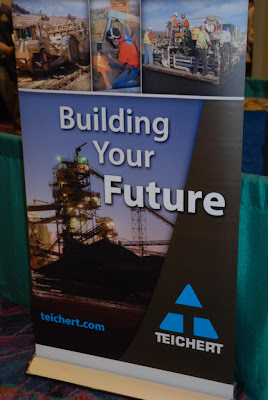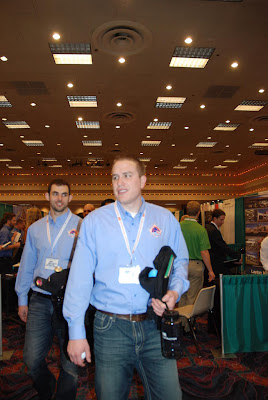Looking back at Reno, it's staggering how many people contributed. From event volunteers to bus drivers, sponsors to technical support staff, those to thank number in the dozens.
 As chair of the Construction Management Department, Tony was involved in myriad administrative aspects of the competition. But you may not know that he also coached the second-place Design Build Team and the Building Information Modeling Team AND rode the bus with the students to Reno and back to Boise. That's dedication (or a temporary lapse in sanity).
As chair of the Construction Management Department, Tony was involved in myriad administrative aspects of the competition. But you may not know that he also coached the second-place Design Build Team and the Building Information Modeling Team AND rode the bus with the students to Reno and back to Boise. That's dedication (or a temporary lapse in sanity). To the CM department, Joan is not known as an administrative assistant — she’s "Mom." Students, faculty and staff are in agreement that the Reno competition could not and would not happen without her. She's a travel agent, accountant, technical support specialist, counselor, image consultant, comedian, courier and supply closet rolled into one.
Casey Cline
Despite the fact that Boise State teams competed in 10 divisions, some of them overlapping, it seemed like Casey was at every single presentation in Reno. In class as an assistant professor and everywhere else, he was a motivating force, whipping the student body into shape on the front end so they would shine on judgment day. And they did, including the Commercial Team and Concrete Solutions Team, both of which he coached.
Kirsten Davis
An assistant professor and official coach of the Preconstruction Team, Kirsten used her attention to detail and hands-on accessibility to support all of the teams in Reno. As questions popped up, she was there with answers for anyone and everyone who needed them. Maybe it's her generous nature, or maybe it has something to do with the fact that she has four degrees and industry experience. Yowsa.
Bill Mincks
Bill took on coaching duties for both the Marine Team and Multi-Family Team, meaning he had twice the heartburn and hopes going into the event. Both teams impressed, with Multi-Family barely missing a first place trophy. A special lecturer in the department, he also was a calming force in the blur of Reno.
Wendy Wendrowski

Even in the ancient world, assessment of risk must have been part of the construction of enduring wonders from the pyramids to the Great Wall. Today, we have experts like Wendy, an adjunct professor who mentored and coached the Determining Project Risk Team. Especially during the planning stages of the overall competition strategy, she was engaged and expressive, two qualities that exemplify the best in the field.
Tom Woodall

As visiting professors go, Tom is one of the most passionate and engaged on either side of the Mississippi. An elite military veteran and heavy hitting professional engineer, he brought expertise, insight and crucial industry contacts to the champion Heavy Civil Team. They call him "The Colonel" for a reason.
Moonlighting from the Department of Civil Engineering, Sondra lent her environmental engineering chops and infectious energy to the LEED Team. Having served as faculty-in-residence in Boise State's Engineering Residential College for three years, she is a proven student advocate and friend. And we hear she makes some mean Italian food.
Francisco Castellon

While the foundation provided by Mom and the faculty coaches is essential, imagine what would happen without Francisco. A systems administrator for Boise State's entire College of Engineering, this IT guy extraordinaire has an amazing ability to problem solve and prioritize, even in the face of freaked out, sleep starved victims of computer mischief. Did we mention he does it with a smile on his face?
In the Reno trenches with these core supporters were other staff and volunteers who deserve serious recognition, including:
Student Volunteers
Bus Drivers
Boise State also depended on the support of many local companies and individuals in bringing the students to Reno (see post #2 for a comprehensive list). At the highest level of investment, team sponsors included Builders Mechanical Inc. (Commercial), ESI (Design Build), Idaho Youth Education Recycling Program (LEED), MarCon Inc. (Concrete Solutions), McMillen LLC (Preconstruction Services), Staker Parson Co.-Idaho Sand & Gravel (Risk) and URS Energy and Construction (Heavy Civil).
Each team learned from and practiced with industry mentors. These connections provided some of the most key real-world pieces to the puzzle, and every success is owed in part to the time and energy donated. All will be specially honored at the Reno wrap-up celebration slated for sometime in March.
Best for last. The STUDENTS. Regardless of the outcome of the competition, everyone who did the work and threw down in Reno deserves respect and acknowledgment. Ask the problem sponsors what they think of the ASC Student Competition and the reaction will be the same — a chuckle, a shake of the head and personal memories about how impossible and thrilling it was to get it done on the other side. Thank you, Broncos. You did us proud.







































